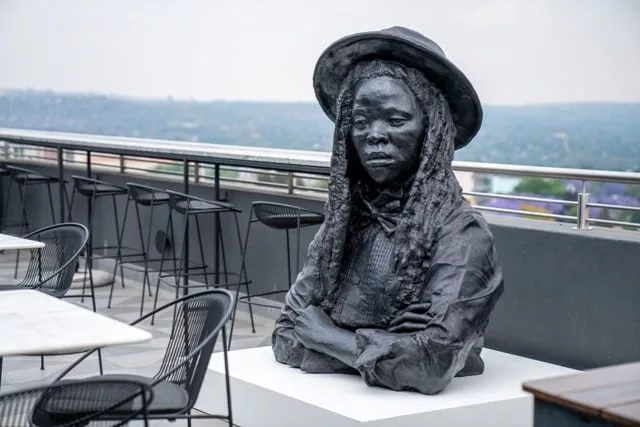The Psychology of Art in Hospitality: Why It Matters

Art has the ability to transcend language, culture, and time. It can evoke emotions, tell stories, and inspire creativity. When it comes to hospitality, art can play a vital role in creating a memorable experience for guests.
In particular, the Radisson RED hotel brand has recognized the importance of art and integrated it into their guest experience in unique and innovative ways. At Radisson RED hotels, art is not just a decoration but a central theme. Each hotel collaborates with local artists to create site-specific art installations. These installations are not only visually stunning but also have a deeper meaning and connection to the local culture and history. The art installations are also frequently updated, keeping the guest experience fresh and exciting.

But why is art important in hospitality?
One reason is that it appeals to guests on a subconscious, psychological level. Studies have shown that exposure to art can reduce stress levels, increase positive emotions, and improve overall well-being. When guests are surrounded by beautiful and thought-provoking art, it can enhance their overall experience and leave a lasting impression.
Art and human history go hand-in-hand. For centuries humans have looked to art as a way to improve well-being and add character to the places we dwell in, with numerous studies proving that people feel better by simply being in the presence of something art related. Modern studies have shown that viewing art reduces depression and anxiety while increasing feelings of love and empathy. In fact according to research done by Professor Semir Zeki, a neurobiologist at the University College London, when we look at beautiful artwork, our brain reacts in a way similar to when we are in love.
Art creates bonds
Art can also create a sense of place and identity. By incorporating local art into a hotel’s design and décor, guests feel a deeper connection to the local culture and history. It also creates a unique and distinctive brand identity for the hotel, setting it apart from its competitors.
Art crosses all divides, holding universal appeal to people from different social, cultural, and political backgrounds. It also introduces us to new ideas and experiences we may never have witnessed before. For example, Radisson RED V&A Waterfront features Cameron Platter’s artwork throughout its hotel, from the lobby to the restaurant and even the tiling in the in-room showers. Platter’s vivid mixed-media works explore notions of excess and consumption through the lens of a South African identity. Across drawing, sculpture, painting, and video, the artist’s extensive and diverse oeuvre is characterized by vibrant colors which evoke a playful feeling. He is interested increasing work which is provocative yet universally relatable, touching on themes of sex, beauty, politics, and violence.

Radisson RED Rosebank currently features work from Zanele Muholi, a South African visual activist and photographer. For over a decade they have documented black lesbian, gay, bisexual, transgender and intersex people’s lives in various townships in South Africa. The labours of love and visionary works adorn sections of the hotel — the rooftop bar and the restaurant area, downstairs, come alive as people move in and out of the space. The interaction between the restaurant patrons and the portraits is undefined, boundless in many ways, just as the legend. Bester l, a photograph dedicated to Muholi’s late mother, who was a domestic worker most of their life, is juxtaposed with the kitchen area, where food is served by waitrons, a firm and telling testament of the activism Muholi speaks of in their work, of their political stance and firm belief in the importance of black visibility.
When a hotel showcases works by local creators, it both strengthens the local economy, and builds community – deepening the viewer’s understanding and connection with the area around them.
At Radisson RED hotels, art is not just limited to the visual sense. The brand also integrates music and performance art into the guest experience. Each hotel has its own resident DJ, and guests can enjoy live music performances and other cultural events. This creates a vibrant and engaging atmosphere, making the hotel a destination in itself.
Art connects us to a space and makes memories
The interplay between art and hospitality is undeniable, and the Radisson RED hotel brand has recognized the importance of art in creating a memorable guest experience. By integrating art into our design, décor, and overall guest experience, we are able to create a unique and engaging atmosphere that appeals to guests on a subconscious psychological level. From site-specific art installations to live music performances and technology-driven experiences, art is at the heart of the Radisson RED hotel brand, inspiring creativity and celebrating local culture and history.
Rendering the insides of a hotel more beautiful and turning its lobby into a cultural hub also goes beyond pure aesthetic appeal. Experiential travel is growing as a tourism trend, and tourists want to make special memories they can take back with them after a holiday. Art is an impactful memory maker, and can help create meaningful, lasting impressions with guests.
This rationale ties in with the commercial understanding that art is a business investment, with several case studies showing that hotels that invest in their art have higher capacity rates, more favourable guest reviews, and more repeat customers.
Lastly, artwork helps bring a brand to life. Displaying a certain style of artwork will serve as a compelling visual narrative, helping guests to immediately understand and connect with the zeitgeist of your space.
Article By Tim Cordon, Chief Operating Officer, Middle East & Africa, Radisson Hotel Group
More from Thought Leadership
What Are the Biggest Challenges in Developing a Hotel Project in Africa?


